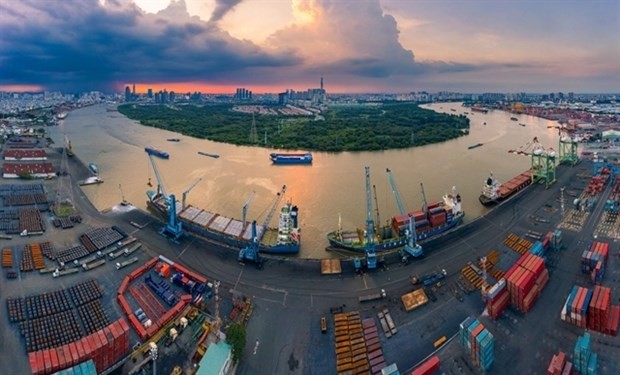Vietnam Develops Synchronous, High-quality Seaport System
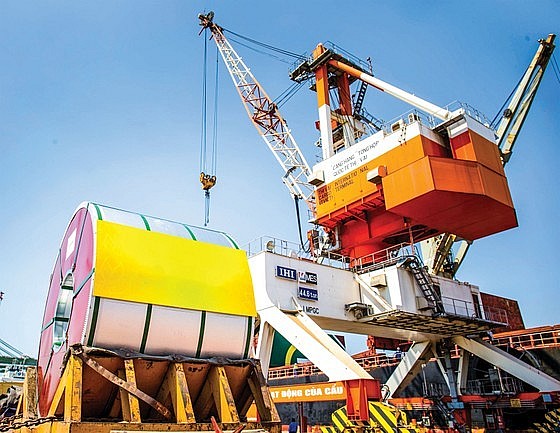 |
| Loading export goods at Cai Mep port, Ba Ria-Vung Tau. Photo: Hoang Hung |
Two main port clusters
According to the Vietnam Maritime Administration, Vietnam's seaport system currently has 286 ports, distributed in five seaport groups, with a total wharf length of more than 96 kilometers, meeting a volume of goods of more than 706 million tons.
Among them, two large seaport clusters, Hai Phong City and Ho Chi Minh City, are both in the top 50 largest container ports in the world.
Deputy Minister of Transport Nguyen Xuan Sang said that a notable breakthrough in the plan is that Vietnam's seaport system will form two special-type seaport clusters to welcome international ships, including Lach Huyen (Hai Phong City) and Cai Mep-Thi Vai (Ba Ria-Vung Tau).
Lach Huyen Port is the deepest seaport in the North, with a total area of 57 hectares and 750 meters of main wharf. Goods from Lach Huyen Port can go directly to the US and Europe without having to transit through ports in regions such as Singapore and Hong Kong, helping to significantly reduce transportation costs and increase competitiveness for Vietnam's import and export goods.
According to the plan, in the period 2020-2025, Lach Huyen Port is invested to be able to receive goods of about 45-50 million tons/year, receiving container ships up to 6,000 TEU (TEU = one 20-foot container).
In the period up to 2030 and after 2030, this port will be upgraded to receive general ships of 100,000 tons and container ships of up to 8,000 TEU.
Following Lach Huyen Port, the Cai Mep-Thi Vai Port cluster (Ba Ria-Vung Tau) is chosen to become an international transshipment port.
This is one of 23 ports in the world that can receive ships with a tonnage of up to 250,000 tons, and is in the group of 50 seaports with the highest container output in the world, annually contributing more than VND20,000 billion (US$817.8 million) in import and export tax to the central budget.
This port currently accounts for more than 16% of the total volume of goods handled through seaports nationwide, 35% of container cargo volume nationwide, and 50% of container cargo volume in the Southern region.
Along with these two special port clusters, the Ministry of Transport will research appropriate policy mechanisms to gradually develop the international transshipment port in Van Phong (Khanh Hoa). The development of the international transshipment seaport at the Bac Van Phong wharf area will be implemented after 2030.
Solving investment problems
According to the Vietnam Maritime Administration, by 2030, Vietnam's seaport system will be developed with a throughput capacity of 1,140-1,423 million tons of goods (of which container goods are from 38-47 million TEU), from 10.1 to 10.3 million visitors.
By 2050, Vietnam's seaport system will be developed synchronously and modernly on par with the region and the world.
To achieve this goal, the need for investment capital in the seaport system by 2030 is about VND313,000 billion (US$12,7 million) (only includes ports providing cargo handling services), mobilized mainly from extra-budget sources, corporate capital, and other legal capital sources.
In particular, capital from the state budget is focused on public maritime infrastructure and key areas, creating spillover power and attracting investment.
According to Deputy Minister of Transport Nguyen Xuan Sang, attracting seaport investment capital is not a matter of concern.
In fact, over many years, the state capital invested in this field has only been about 16%-17%, the remaining 83% is private.
Currently, large domestic and foreign investors are interested in many seaport projects. The question is how effective the operation is with a series of invested superports.
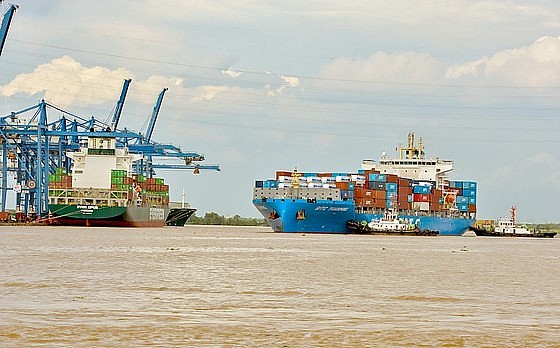 |
| Ships carrying goods enter Tan Cang Cat Lai port. Photo: Cao Thang |
Vice Chairman of Vietnam Seaports Association Tran Khanh Hoang said that developing high-quality seaport infrastructure and effectively utilizing the seaport system are prerequisites for building a successful marine economic development strategy, especially for countries strong in exports.
However, to invest effectively, the investment policy for seaport construction needs to be calculated. If demand exceeds supply, ships will have to wait for demand, and freight rates will increase.
Therefore, state management agencies and businesses need to be careful in researching and accurately forecasting demand through goods and planning investment roadmaps.
This is to avoid the risk of infrastructure excess, unnecessary competition, and resource dispersion leading to increased costs and financial risks.
With the goal of developing seaports, Minister of Transport Nguyen Van Thang asked the Vietnam Maritime Administration to urgently remove these bottlenecks.
In particular, the Minister requested to develop a plan to submit to competent authorities to arrange medium-term capital sources for 2026-2030, to invest in transportation infrastructure, focusing on projects connecting to major seaport areas to upgrade Vietnam's seaports.
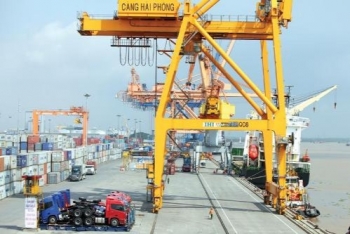 | Cargoes handled at Vietnam's seaports grew 6% in 7 months The total cargo volume handled at Vietnam's seaports reached an estimated 397.5 million tons in the first 7 months of 2020; of which container volume ... |
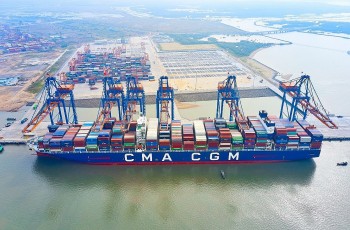 | Seaport Companies in Vietnam Anticipating Export Growth Vietnamese companies in the seaport industry have been recording positive business results. The total output of goods through domestic seaport is expected to increase 15% ... |
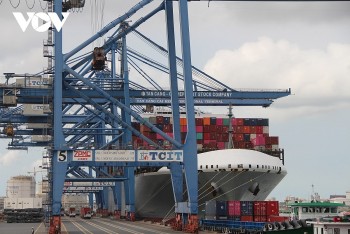 | Cai Mep Ranked 12th among World’s Most Efficient Container Ports According to the Container Port Performance Index 2022 report developed and published recently by World Bank and S&P Global Market Intelligence, Cai Mep port of ... |
Recommended
 Viet's Home
Viet's Home
Hue City to Raise Awareness on Mine Accident Prevention
 Focus
Focus
Vietnam Leaves Imprints on the World Peacekeeping Map
 Viet's Home
Viet's Home
“Global Vietnamese Singing 2025” - Connecting Hearts Longing for Homeland
 Viet's Home
Viet's Home
Vietnam’s People's Public Security Force Actively Contributes to UN Peacekeeping Operations
Popular article
 Viet's Home
Viet's Home
HAUFO Enhances Competence of People-to-People Diplomacy Personnel
 Viet's Home
Viet's Home
Hands that Reserve Da Long Brocade Craft
 Viet's Home
Viet's Home
Da Rsal – How Digital Transformation Reshape a Poor Commune
 Viet's Home
Viet's Home




